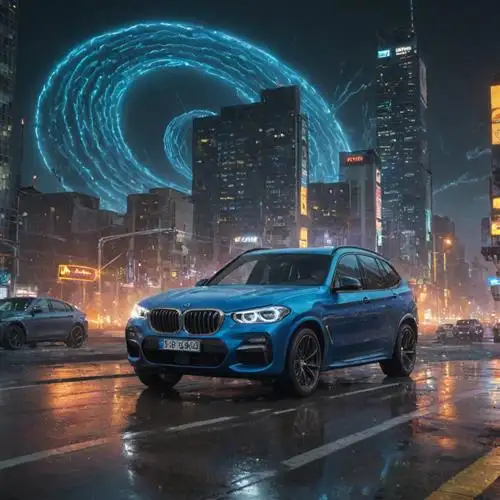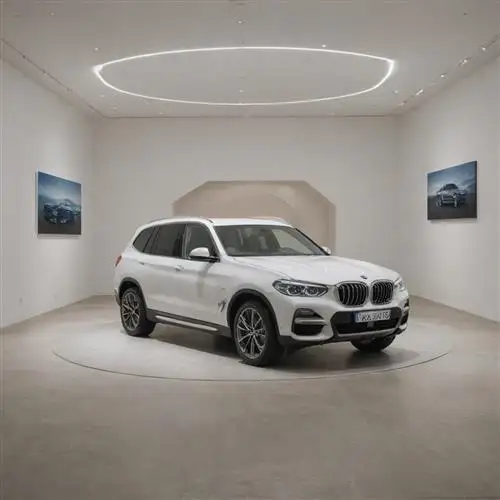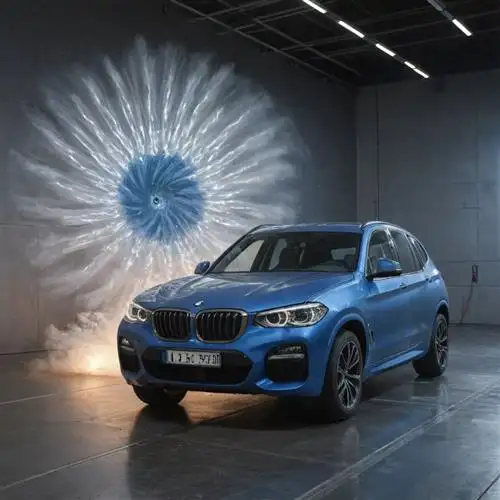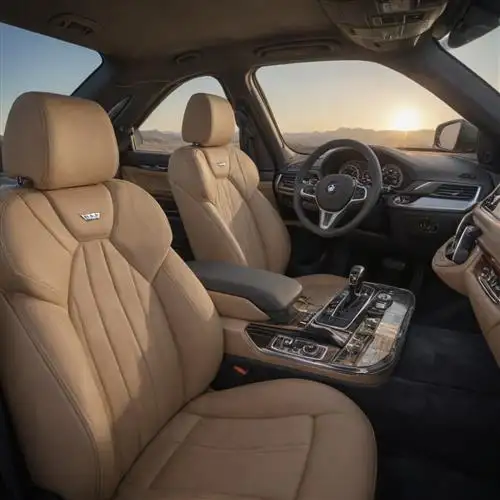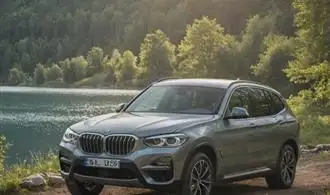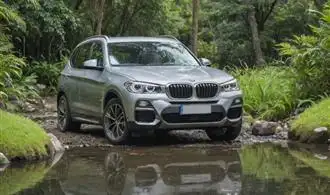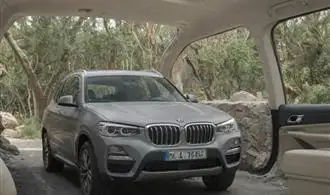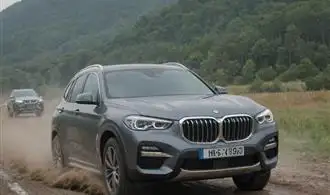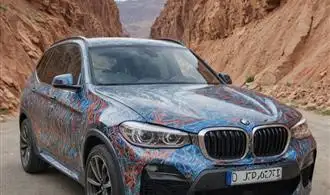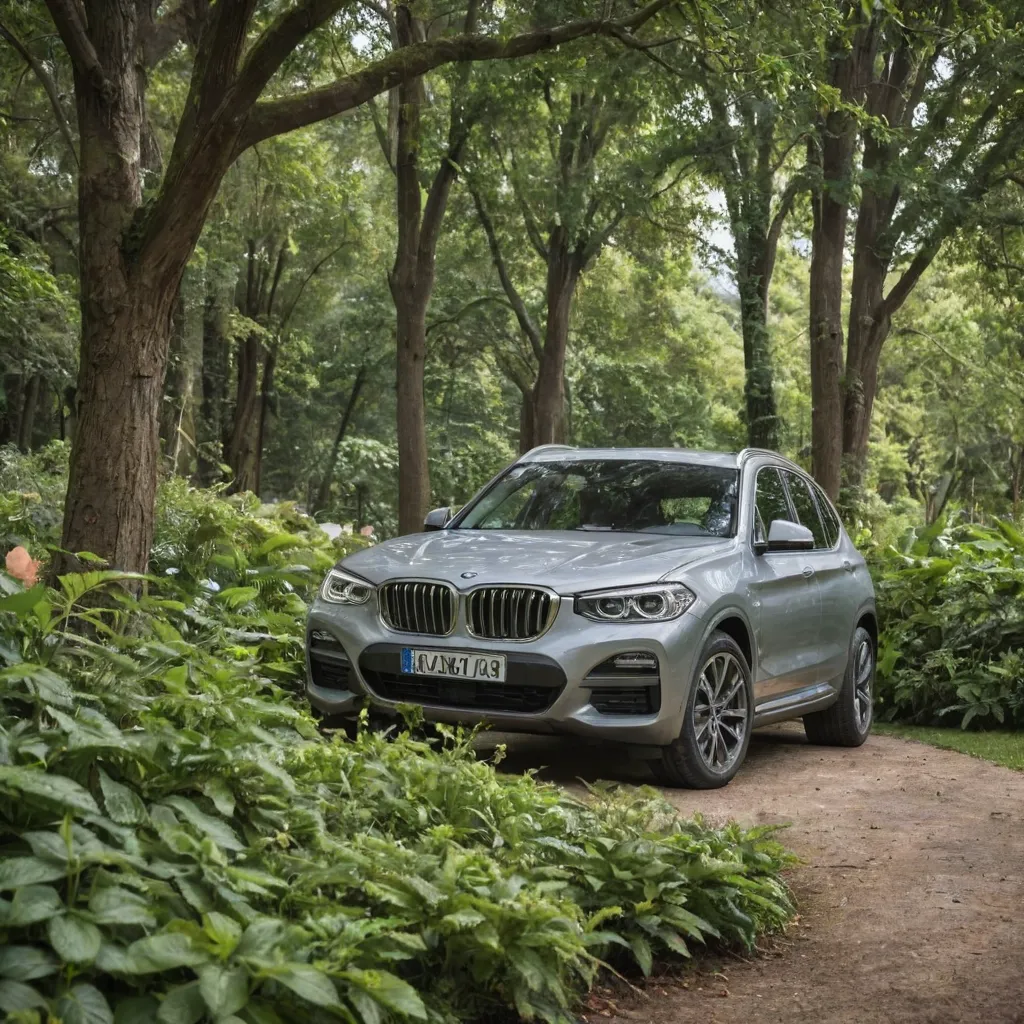
The Iconic Boxy Design of the Original BMW X3
The BMW X3 has undergone a remarkable transformation since its inception, but it is the iconic boxy design of the original model that truly captured the hearts of SUV enthusiasts. This distinctive silhouette was not merely a stylistic choice; it was a reflection of BMW's commitment to function and performance, showcasing the brand's engineering prowess and design philosophy.
The original X3, introduced in 2003, was a stark departure from the sleek, aerodynamic lines that had become the hallmark of BMW's sedan lineup. Instead, the X3 embraced a more rugged, squared-off aesthetic that immediately set it apart from the competition. This boxy design served a dual purpose - it not only provided a bold visual statement but also contributed to the vehicle's impressive off-road capabilities.
The squared-off front end, with its prominent kidney grille and commanding presence, gave the X3 an undeniable sense of authority and confidence on the road. The tall, upright stance and generous ground clearance suggested a level of capability that went beyond the typical luxury SUV, appealing to a wide range of customers who sought a vehicle that could handle both urban commutes and off-road adventures.
Beneath the boxy exterior, the original X3 was built on a robust platform that prioritized strength, stability, and agility. The use of high-strength steel and advanced suspension components allowed the X3 to maintain its composure on winding roads and uneven terrain, delivering a driving experience that was both exhilarating and comfortable.
One of the defining features of the original X3's boxy design was the distinct character line that ran along the sides of the vehicle, creating a bold, muscular profile. This design element not only added visual interest but also contributed to the overall sense of ruggedness and capability, hinting at the X3's potential for adventure and exploration.
The boxy design of the original X3 also lent itself well to practical considerations, such as ample interior space and cargo capacity. The squared-off shape maximized the available volume, allowing the X3 to accommodate passengers and gear with ease, making it an attractive option for families and active outdoor enthusiasts alike.
Refined Elegance The BMW X3 S Progressive Design Approach
The BMW X3's design evolution is a captivating narrative of refined elegance and innovative thinking. At the core of this SUV's allure is its progressive design approach, which seamlessly blends form and function to create a truly remarkable driving experience. The signature BMW kidney grille, a hallmark of the brand's identity, has been meticulously crafted to exude a sense of confident and commanding presence on the road.
Enhancing the X3's dynamic silhouette is its sculpted bodylines, which not only contribute to its aerodynamic efficiency but also lend an air of refined sophistication. The vehicle's proportions have been carefully balanced, with a long hood, short overhangs, and a muscular stance that convey a sense of power and agility. The seamless integration of the LED headlights and taillights further reinforces the X3's contemporary and cutting-edge aesthetic, ensuring it remains a standout in the crowded SUV market.
One of the defining features of the BMW X3's design evolution is its attention to detail. From the precise craftsmanship of the exterior trim to the meticulous finishes of the interior, every element has been meticulously designed to provide a cohesive and visually appealing experience. The use of high-quality materials, such as premium leather and polished aluminum accents, elevates the cabin's ambiance and reinforces the X3's position as a premium offering in the SUV segment.
Conquer the Future of BMW X3 Tech - A Sneak Peek The integration of the latest technological advancements further enhances the BMW X3's design prowess. Intuitive infotainment systems, advanced driver assistance features, and seamless connectivity solutions all contribute to a driving experience that is both sophisticated and responsive.
Aerodynamic Enhancements Improving the BMW X3s Performance
The BMW X3 has continuously evolved since its introduction, with each generation showcasing refined aerodynamic enhancements that have improved the SUV's performance. The latest iteration, the G01 X3, boasts a meticulously designed exterior that not only enhances the vehicle's aesthetics but also optimizes its airflow, resulting in enhanced efficiency and dynamic capabilities.
The G01 X3's aerodynamic design starts with its carefully sculpted front end. The kidney grille, a signature BMW design element, has been optimized to channel air flow more efficiently, reducing drag and improving overall aerodynamics. The headlight design, with their distinctive angular shapes, also contribute to the vehicle's sleek appearance while managing airflow around the front of the car.
Moving towards the sides, the X3's character lines and contoured surfaces play a crucial role in smoothing the airflow over the body. The gentle creases and curvatures help to direct the air around the vehicle, minimizing turbulence and reducing drag. Additionally, the side mirrors have been strategically positioned and shaped to minimize wind resistance, further enhancing the X3's aerodynamic performance.
At the rear, the X3's design features specific elements that contribute to its aerodynamic efficiency. The roofline tapers gently towards the back, creating a sleek and streamlined silhouette that reduces the vehicle's drag coefficient. The taillight design, with their distinctive L-shaped elements, also aid in managing the airflow as it flows over the rear of the vehicle.
Complementing the exterior design, the BMW X3 also incorporates advanced underbody aerodynamics to improve its overall efficiency. The smooth underbody panels, along with strategically placed air deflectors, help to guide the airflow beneath the vehicle, reducing turbulence and improving the X3's overall aerodynamic performance.
Luxurious Interior Design Elevating the BMW X3 Experience
Stepping inside the BMW X3, one is immediately enveloped in a world of luxury and sophistication. The cabin design is a harmonious blend of premium materials, meticulously crafted surfaces, and intuitive technology, all working together to elevate the driving experience. The plush leather seats offer exceptional comfort and support, while the genuine wood or aluminum trim accents add a touch of elegance. The attention to detail is evident in the precise stitching, the smooth operation of the controls, and the seamless integration of the infotainment system.
The BMW X3's interior is not merely a functional space but a true sanctuary for the senses. The ambient lighting system bathes the cabin in a warm, soothing glow, creating a sense of tranquility and relaxation. The panoramic sunroof, when open, floods the interior with natural light, enhancing the airy and spacious feel. The The Ultimate Guide to Choosing Between the BMW X3 and Audi Q5 provides a comprehensive comparison to help you make an informed decision.
Functionality is also a key priority in the BMW X3's interior design. The intuitive layout of the controls and the responsive touchscreen interface ensure that the driver can easily access and manage a wide range of features, from navigation to entertainment. The available heads-up display projects vital information directly into the driver's line of sight, allowing them to keep their eyes on the road while staying informed.
The attention to detail extends to the practicality of the cabin. The spacious cargo area, with its power-operated tailgate, offers ample room for luggage, sporting equipment, or any other items the adventurous owner might need to transport. The versatile rear seats can be folded down to accommodate larger cargo, providing the flexibility to adapt to varying lifestyle needs.
Sustainable Design Initiatives Shaping the Future of the BMW X3
The BMW X3 has long been a leader in the luxury SUV market, and the brand's commitment to sustainable design initiatives has been a driving force behind the evolution of this iconic model. As the automotive industry grapples with the need to reduce emissions and embrace a more eco-friendly future, BMW has consistently demonstrated its dedication to incorporating sustainable practices into the development of the X3.
One of the key sustainable design initiatives shaping the future of the BMW X3 is the brand's focus on lightweight construction. By utilizing a strategic mix of materials, including high-strength steel, aluminum, and carbon fiber, BMW has been able to significantly reduce the overall weight of the X3. This not only enhances the vehicle's fuel efficiency and performance, but it also contributes to a lower carbon footprint throughout the production and operation phases.
Additionally, BMW has made strides in the area of powertrain electrification, offering hybrid and fully electric variants of the X3. The BMW X3 xDrive30e, for instance, combines a powerful gasoline engine with an electric motor to deliver an impressive balance of performance and efficiency. This hybrid model allows drivers to enjoy the benefits of electric driving, such as zero local emissions and reduced fuel consumption, without compromising the renowned driving dynamics that the X3 is known for.
The commitment to sustainability extends beyond the powertrain, as BMW has also implemented a range of eco-friendly practices in the manufacturing process of the X3. This includes the use of renewable energy sources, water conservation measures, and the implementation of closed-loop recycling systems to minimize waste and maximize the reuse of materials. These efforts not only contribute to a lower environmental impact but also align with the brand's overall vision of sustainable mobility.

